If you're looking to enhance employee performance through a structured approach, a performance improvement plan (PIP) can be the perfect tool. It outlines clear expectations, provides support, and creates accountability, all while fostering a culture of growth and development. In this article, we'll explore effective strategies for crafting a PIP that not only addresses areas for improvement but also motivates employees to thrive. Ready to dive deeper into creating an impactful performance plan?

Clear Performance Expectations
Establishing clear performance expectations is crucial for employee development in organizations. An employee performance improvement plan (PIP) outlines specific goals and expectations to enhance job performance. For instance, outlining key performance indicators (KPIs) such as productivity metrics, quality of work standards, and attendance records ensures clarity. Setting a timeline, typically ranging from 30 to 90 days, allows employees to track their progress and achieve milestones. Providing detailed feedback on areas needing improvement promotes accountability and encourages regular check-ins, fostering a culture of support and growth. These elements combined create a structured roadmap for success within the workplace.
Specific Areas of Improvement
Employee performance improvement plans (PIPs) are essential for addressing specific areas where an employee's performance does not meet established standards. For instance, performance metrics may indicate a decline in sales figures, such as a 15% drop in quarterly sales for a retail associate at ABC Store, located in Springfield. Another area could involve meeting project deadlines; for example, a software developer at XYZ Tech failed to complete three out of five assigned tasks by the agreed deadline in the last month. Communication skills represent another crucial improvement area; employee feedback highlighted miscommunication during team meetings at the corporate headquarters in New York City, resulting in a 30% increase in project delays. These areas require focused strategy implementation for skill enhancement and accountability. Regular progress evaluations should be scheduled weekly, with documentation of improvements or ongoing challenges.
Actionable Steps and Resources
An effective employee performance improvement plan (PIP) involves structured actions and resources tailored to address specific performance issues. Identifying measurable goals, such as increasing sales by 15% over the next quarter at a company like ABC Corp, is essential. Providing resources, including access to training programs like "Sales Mastery" workshops offered by professional organizations, can enhance skill sets. Regular check-in meetings, perhaps bi-weekly, allow for progress assessment and real-time feedback. Establishing a timeline for achieving improvements, for instance, three months from the initial meeting date, ensures accountability. Encouragingmentoring relationships with experienced colleagues within the company creates additional support and fosters a collaborative environment. Documenting progress along the way aids in transparent communication and emphasizes a commitment to employee development.
Timeline for Improvement
An employee performance improvement plan (PIP) typically outlines specific goals and timelines to enhance job performance. Effective PIPs usually allow for a dedicated period of 30 to 90 days for the employee to achieve the set objectives. Clear milestones should be established, such as weekly check-ins to assess progress and provide feedback. During this timeframe, regular meetings between the employee and their supervisor should take place, ensuring support and guidance are available. Ultimately, the goal is to provide a structured approach for the employee to reach required performance standards by the end of the designated period.
Consequences of Non-Improvement
An employee performance improvement plan (PIP) outlines specific goals and expectations aimed at enhancing an employee's performance within a designated timeframe. Failure to show measurable improvement can lead to serious consequences including potential termination from the company. Consistent underperformance may impact team morale, project timelines, and overall productivity. Documentation of performance issues remains crucial, as it provides necessary evidence for any future decisions regarding employment status. Employees should be aware that repeated failure to meet performance standards could result in reassignment, reduced responsibilities, or demotion. Furthermore, lacking improvement might hinder opportunities for career advancement and professional development within the organization.
Letter Template For Employee Performance Improvement Plan Samples
Letter template of performance improvement action plan for employee development

Letter template of performance management plan for underperforming staff
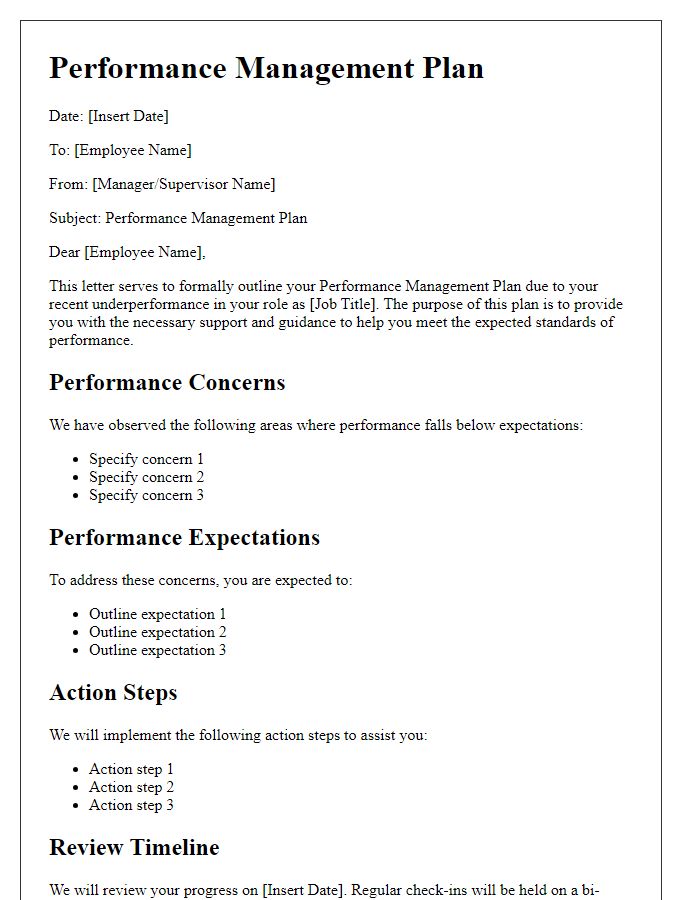




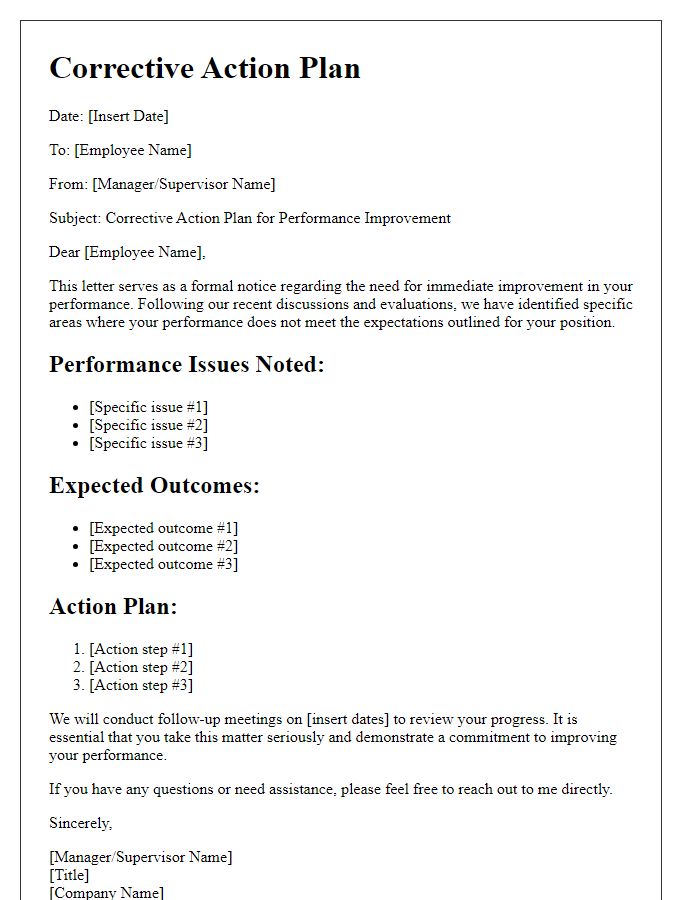

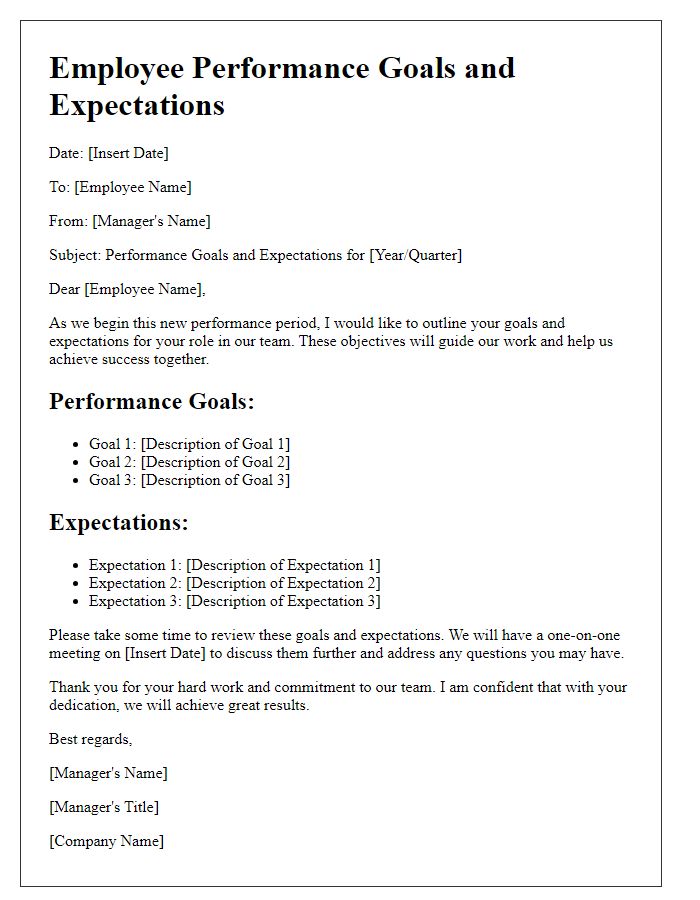
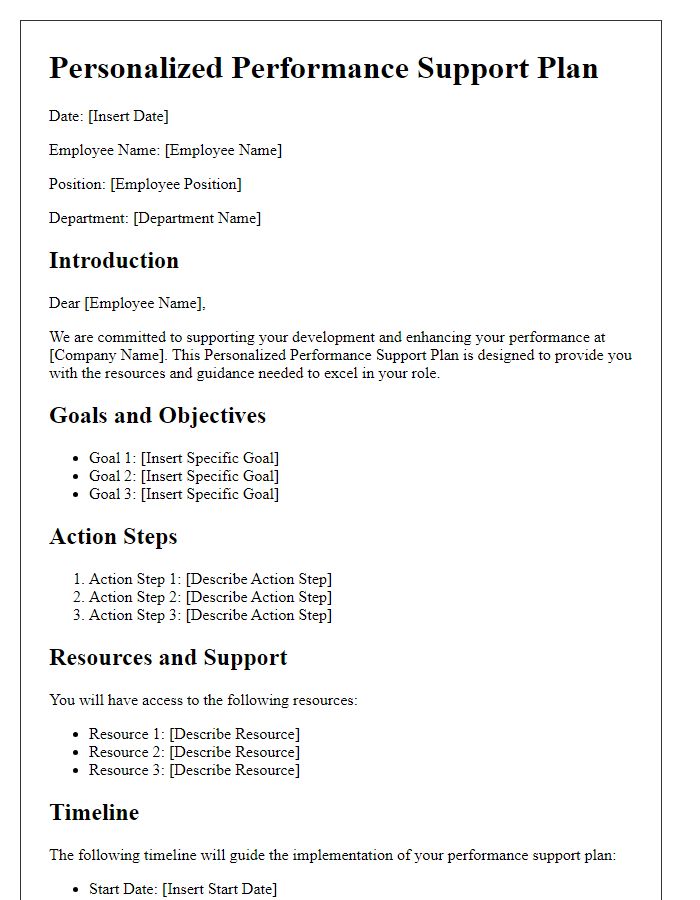
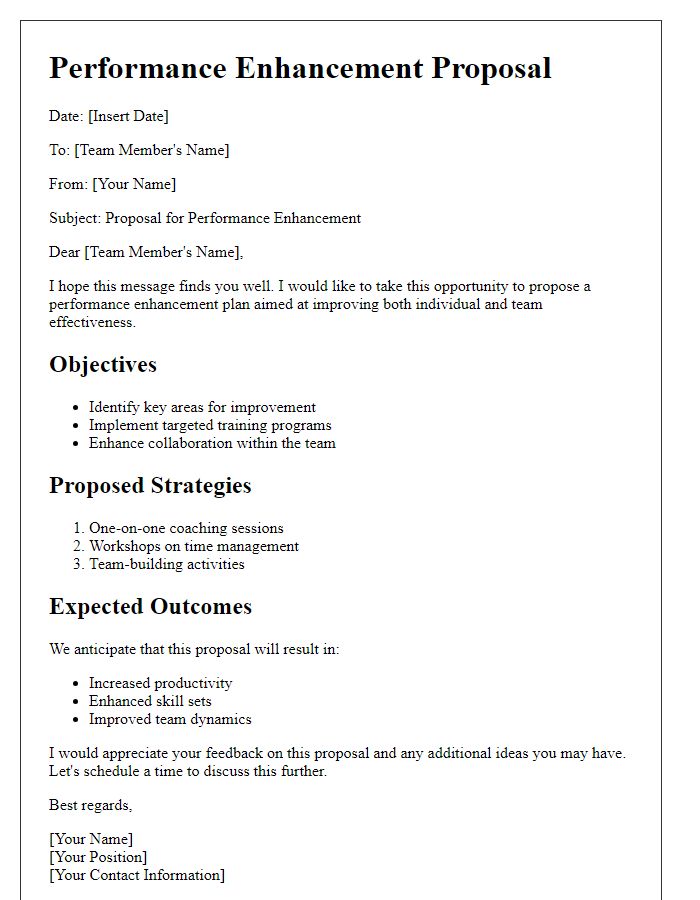


Comments